|
by Dark Watcher |
|
|
At an electronic show called E3 in 1999, Nintendo announced the initial specifications for its next-generation console, code-named
Dolphin. The first thing that Nintendo made clear was that the new system would not use a cartridge medium. The
Nintendo
64 had done decent with the format, but games were expensive and the format alienated some 3rd Party developers. As months past
more specifics were released about the new console. Nintendo would have several companies involved in the project. IBM
designed and manufactured the console processor called the "Gekko". The graphics processor called "Flipper" was designed by a
small startup company called ArtX who was later bought out by ATI. The graphics chip was manufactured by NEC. Macronix and
Factor 5 contributed the sound with MoSys providing the system memory. Lastly the console would use a proprietary 8cm optical
disc game format capable of holding 1.5GB of data (twice the capacity of CD-ROMs). This disk was developed and manufactured by
Matsushita (best known for the Panasonic brand name). It became clear that Nintendo was indeed developing something impressive. Nintendo's new console was revealed on August 24, 2000 at their Nintendo Spaceworld show. The console, which was now being called Starcube, was officially named the Nintendo GameCube. A fitting name for one of the smallest console system in recent history. The GameCube's power was demonstrated with a tech demo of a game simply called Mario 128. Displaying textures would be the GameCube's most potent asset. GameCube uses 6-to-1 texture compression, which will let texture data be shrunk to one-sixth its original size, with no appreciable hit on the hardware. This was clearly apparent as onlookers watched 128 rendered Mario character models running around the screen at once. |
 |
| Many questioned why Nintendo would not utilize the immense DVD storage format and movie playback that rival consoles were using. Nintendo would state that they have made a next-generation, powerful, easy to understand and easy to develop gaming system and that would be their only focus. Nintendo also unveiled new forms of connectivity between Nintendo GameCube and their popular handheld portable Game Boy Advance. By linking the two systems, the Game Boy Advance can be used as more than a controller. For instance, players can transfer a character trained on GameCube to Game Boy Advance to continue game play while away from home. Or, transport characters or items via Game Boy Advance to trade with friends. And, with innovative technology such as "tilt control" players can maneuver a character just by tilting a Game Boy Advance controller. Nintendo would reveal other linking concepts in later years. | |
| Nintendo launched the GameCube in Japan on September 15, 2001. Although Nintendo would market the console in other colors, only the Indigo (purple) version was initially available. The decision to not use their proprietary format (rather then DVD) allowed Nintendo the ability to market the GameCube for around $100 less then the PlayStation 2 and Xbox (Japan retailed at 25,000 yen). A lack of initial game titles, plus a subdued publicity campaign, may have hindered the Japanese GameCube launch. Nintendo released only three games (Luigi's Mansion, Super Monkey Ball and Wave Race: Blue Storm and managed to sell 300,000 of 450,000 shipped units. Clearly not the usual publicized launch that usually occurs abroad, but another contributing factor may have been the world’s focus on the September 11th Terrorist Attack on the US. The GameCube launch in the US was originally scheduled for November 5, 2001. Nintendo felt it wiser to delay the release in order to make more units and launch titles available. The GameCube was officially launched on November 18th, only a mere few days after the release of Microsoft's Xbox. Over 700,000 units and 8 launch titles were available at launch. Even with two other next generation consoles on the market, the GameCube still managed to sell out its initial shipment. |
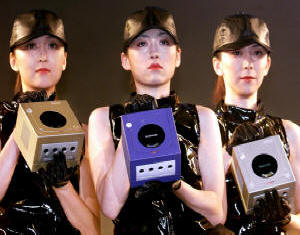 |
|
The success followed with the European launch in May of 2002. As the other rival consoles went about unveiling their online
gaming strategies, Nintendo merely announced the availability of a network adapter that could be used with Phantasy Star Online.
It appeared as if online gaming was not part on Nintendo's overall strategy at that point. The main focus however was to release
quality game titles which had slowed to a trickle since the console's debut. Toward the end of 2002 however, the GameCube saw the
release of many quality "must have" exclusive games. The GameCube had truly restored Nintendo's popularity with both gamers and developers. Its small unique shape and makeshift handle inspired developers to create an attaching LCD screen and battery pack for a somewhat portable game experience. Remakes and sequels to Nintendo's popular franchise characters has pushed software sales for the console even further. It seems Nintendo has done well to continue their console legacy. FACT: In Japan it appeared as if the PlayStation 2 was gaining many hardware sales by being a low costing DVD player. Nintendo partner Matsushita saw an opportunity to also cash in. The result? The Panasonic Q: a machine that combines a Nintendo GameCube and Panasonic DVD player into one. The Panasonic Q was only sold for retail in Japan, however it can be purchased through import retailers. To help garner the attention of import consumers, establishments such as Upstate Games have gone the extra mile to make it totally region friendly, enabling you to play all region DVDs in addition to Japanese and US GameCube software. However, importing this puppy is an expensive endeavor. |
|
|
by Dark Watcher |
|
|
So lets get this straight Nintendo...You want to keep us a fan, claim your not a kiddy toy and then debut with a purple barney box
(they call it indigo)? Thank goodness you featured the more Dark Watcher friendly "jet black" color. Nintendo later
debuted more colors (maybe it was best that spicy orange was Japan only). Nintendo’s design was refreshing for a 6th generation
console. For an era of big behemoth units, the GameCube was a power package in a tiny box (in this case size does not matter).
The small form factor was much appreciated and many reports and videos demonstrated the GameCube's durability (it survives some of the
worst smashes and falls!). DW just did not get the built-in handle concept. Sure, the GameCube is nice and portable, and
attachable 3rd Party LCD screens made it sort of an "On the go" game console, but you still had to lug around a power brick and
controllers. Besides, in most neighborhoods walking around with a purple GameCube by the handle is likely to lead to a beat down
and robbery. The GameCube was big N's attempt to finally abandon the cart format and go optical. They elected to go with a proprietary 80 mm 1.4 GB disc. This contributed to the small form factor, but also had its downfalls (more on that later). This meant that the GameCube offered no other functionality outside of gaming (unlike their console rivals). They attempted to bridge the lack of multimedia functionality with a variety of connectivity options with their GameBoy Advance handheld. We took no value from it though. |
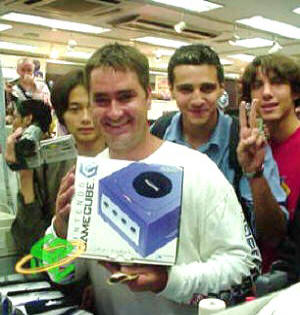 |
|
Although there were reports of internal "overheat" disc read errors, we have never had any issues. Perhaps it is because we do
not have the gaming habits of a preteen completionist cracked on energy drinks. Our original model featured the digital-out port
that was removed in later models (bad move N), a "High Speed" port which allowed us to enjoy our Gameboy Player and 2 serial ports
(Nintendo eventually removed 1 in later models). The serial ports could be used with a dial-up or broadband adapter, but with
only a handful of online games…we did not bother with it. Four (4) controller ports allowed for multiplayer, but in house only. The GameCube controller was well designed. It fit well in the hands, featured analog and digital directional controls and buttons, force feedback and the button layout (even that oversized button) worked well for most games (although not so well with fighting games). Nintendo's licensed wireless Wavebird controller worked great even up to 30 feet. The only downside is the removal of force feedback in order to extend battery life. The GameCube put out some amazing graphics with 2D and 3D sprites / textures with cell shading, pre-rendered video, bump mapping and even stereoscopic 3D. Visually, it falls just shy of the Xbox in terms of presentation and just shy of PlayStation 2 in terms of on-screen animation. The maximum resolution was 480p / 576i at 16:9 (available in some games), but only fully available in older models that retained the digital-out port. In terms of sound, the GameCube uses analog stereo with "faked up" surround sound supported by Dolby Pro Logic II. So it cannot compete with its rivals in this area, but it was not designed with multimedia in mind. For games that truly took advantage, the GameCube could still put out good sound. The choice to finally go optical helped win back third-party developer support, but the limited size meant that some games had to be split up into several discs. The small discs do add to some level of portability though. Like most optical discs, they can be scratched and damaged, but the GameCube's error correction capabilities can handle minor scratches. |
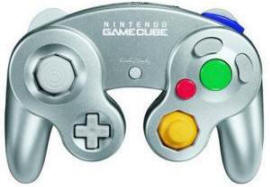 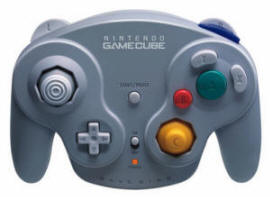 |
|
Nintendo had a slow time gaining 3rd party support, but eventually received great titles. Their most successful titles were
based on their own franchise characters and in house development. They even garnered successes with Sega ports from the
Dreamcast console. They were slow in targeting every demographic. Sports titles were limited and mature rated games were
trickled in over time. More emphasis was placed on younger party like games in the beginning, but eventually the GameCube would
see quality titles. The GameCube was designed primarily for in-house gaming. Its small size allowed for it to be easily transported and it produced a number of great game titles. Nintendo did well in achieving attractive price points for the console which contributed to its value. It was a good little box that would eventually be rendered obsolete by its successor. |
|
|






 2010s - NOTES
2010s - NOTES


 MODELS
MODELS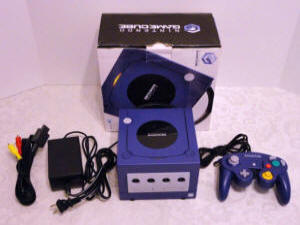
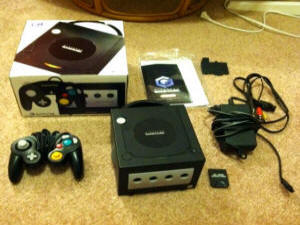
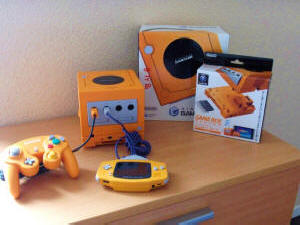
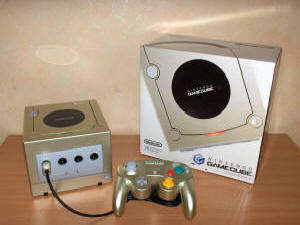
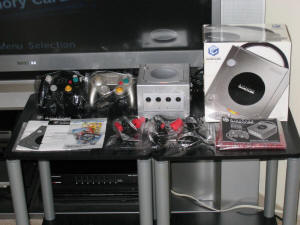
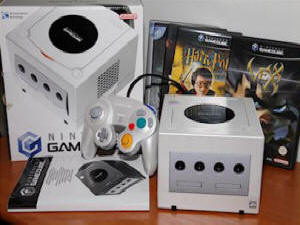
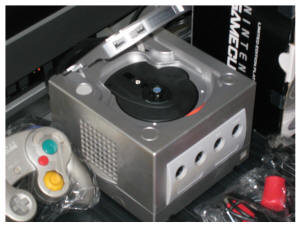
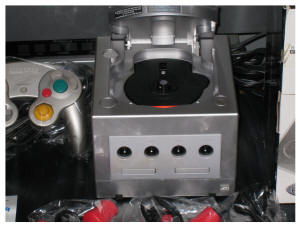
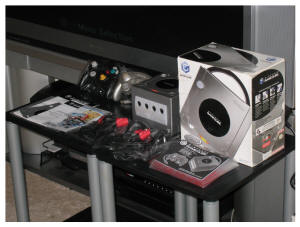
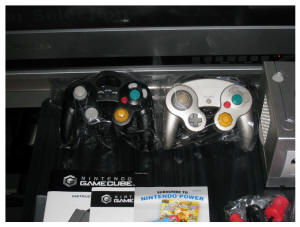
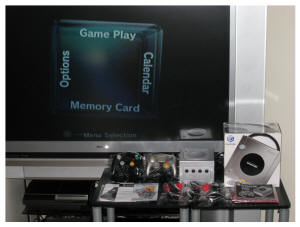
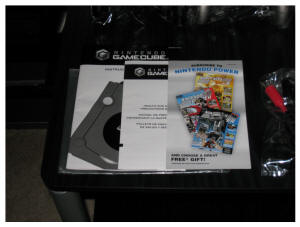
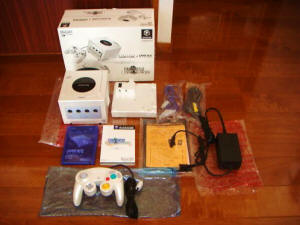
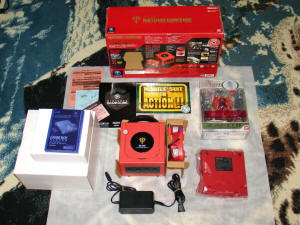
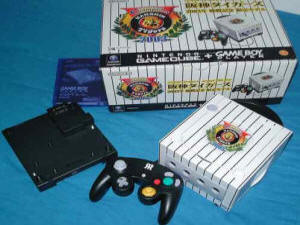
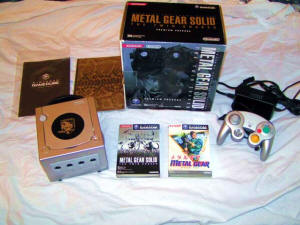
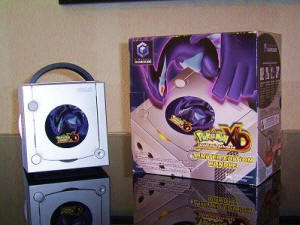
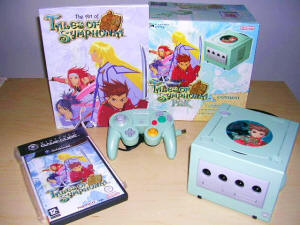
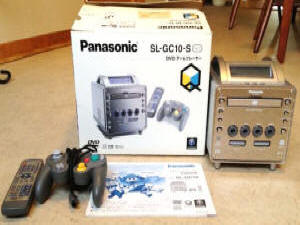
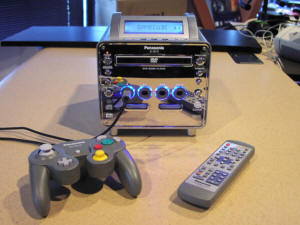
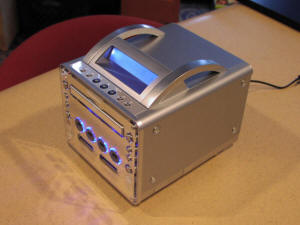
 CLONES
CLONES CONSOLE RATINGS
CONSOLE RATINGS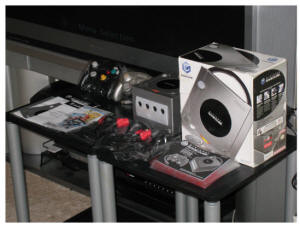
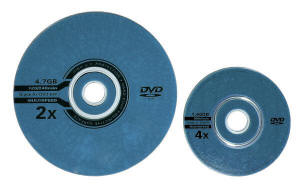
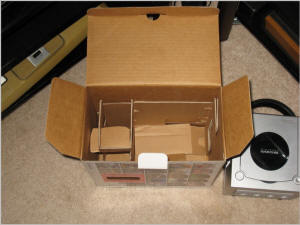
 FORMAT, PACKAGING & GENERAL INFO
FORMAT, PACKAGING & GENERAL INFO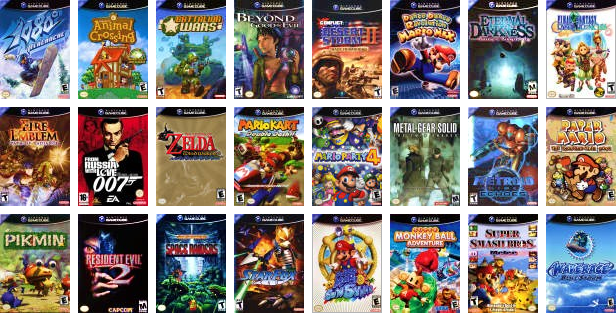
 SCREENSHOTS
SCREENSHOTS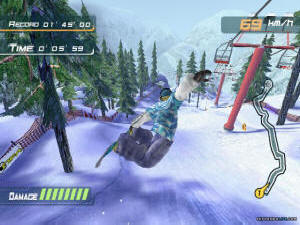
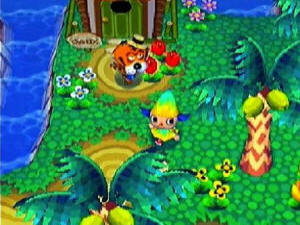
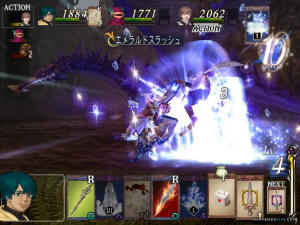
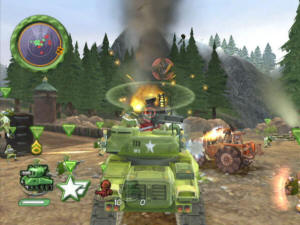
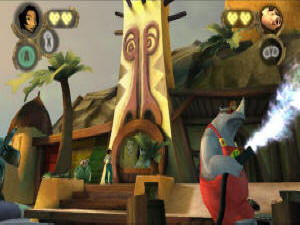
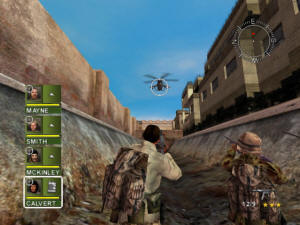
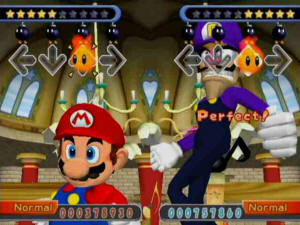
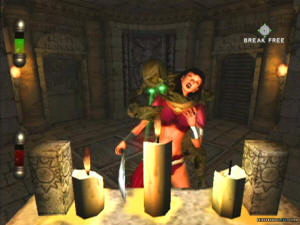
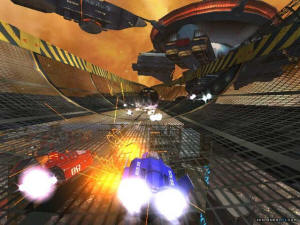
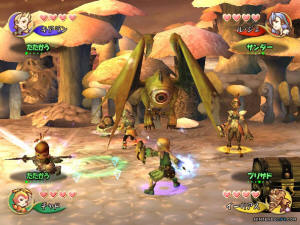
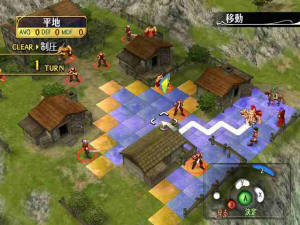
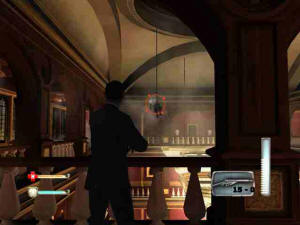
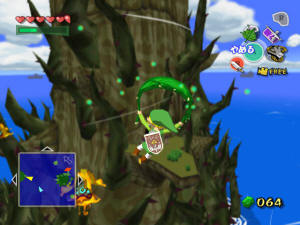
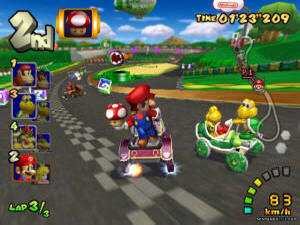
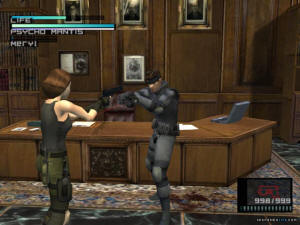
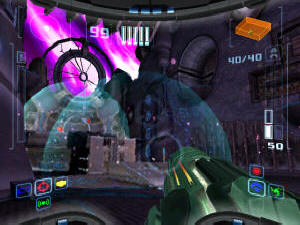
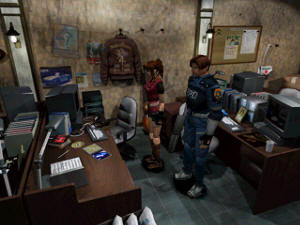
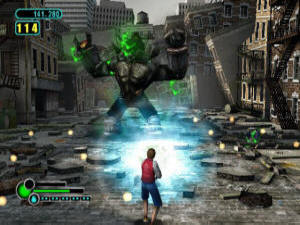
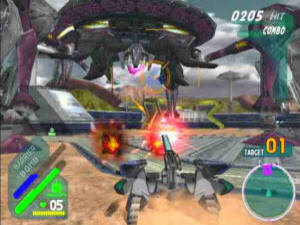
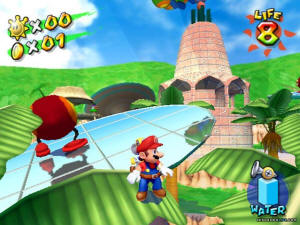
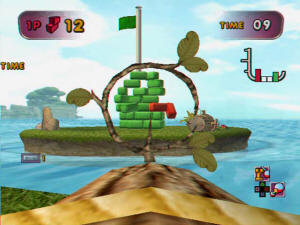
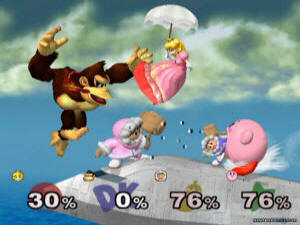
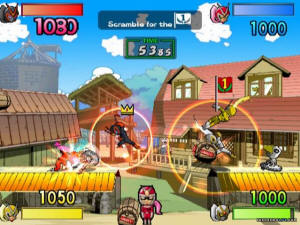
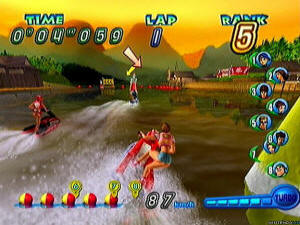
 EMULATION
EMULATION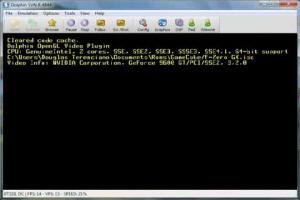
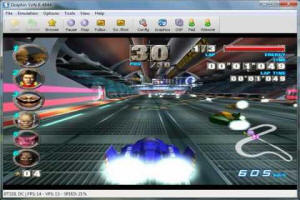
 SPECS & MANUALS
SPECS & MANUALS OTHER
MEDIA
OTHER
MEDIA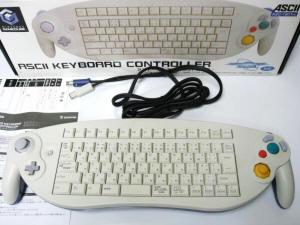
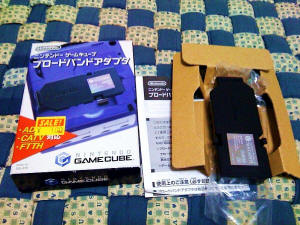
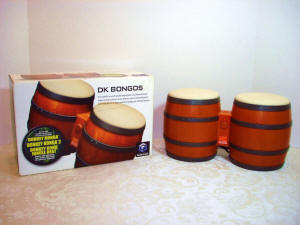
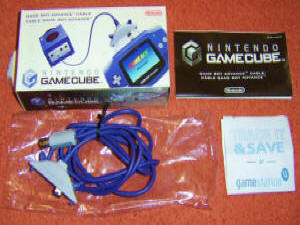
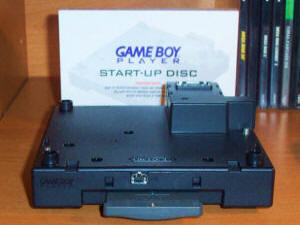
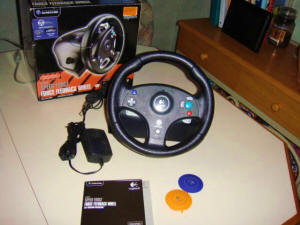
 WEB RESOURCES
WEB RESOURCES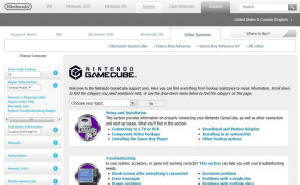
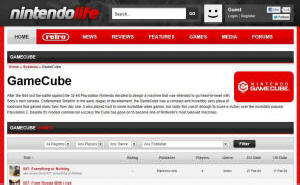
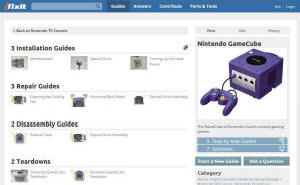
 DISCUSS
DISCUSS